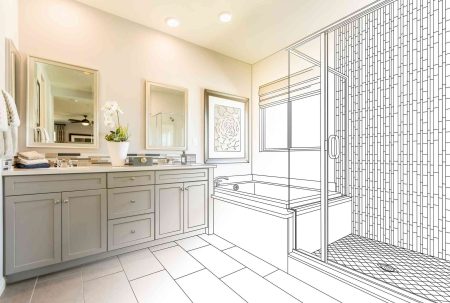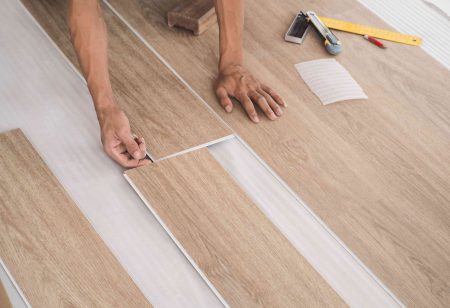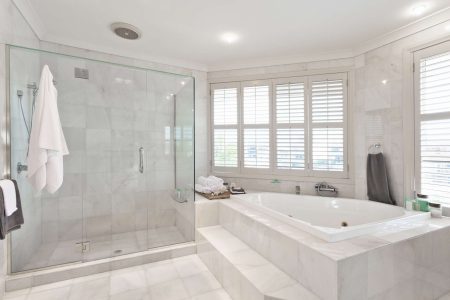Blinds are ideal for maintaining privacy in your own home, but they aren’t always pleasing to the eye. Curtains, on the other hand, offer plenty of style while making your home feel cozy and warm. Both types of window treatments have their pros and cons, but if you’re a renter, you’re usually stuck with one or the other. It doesn’t have to be that way, though: No matter your circumstances, you don’t have to choose between curtains and blinds.
Get the best of both worlds by hanging curtains over blinds. Here’s a no-drill (read: renter-friendly) way to easily cover your blinds, including vertical blinds, using window brackets or Command hooks. (No tension rods here—in nearly all cases, tension rods won’t fit over blinds.)
Before You Begin
Measure the length and width of your window before hanging curtains. The length is how much fabric or which curtain length you’ll need, and the width will tell you how long a curtain rod to buy. As a general rule, purchase a curtain rod that’s a few inches longer than the width of your window to ensure it’s stable when you hang it.
What You’ll Need
Equipment / Tools
Materials
- Fabric curtains
- Curtain rod
- 2 Curtain rod brackets or adhesive hooks (aka Command hooks)
- 2 Screws (for brackets)
Materials
Equipment/Tools
- 1 Screwdriver
- 1 Tape measure
Instructions
-
Install Brackets or Adhesive Hooks
You can drill curtain brackets into your wall, or install them on your headrail. The headrail is the bar that runs horizontally at the top of your blinds. There are some products specially made to be installed on headrails, so purchase those if possible. Installing the brackets directly onto the headrail eliminates the need for you to drill holes for them in your wall. Most curtain brackets will come with the screws you’ll need to install them onto your headrail. If not, you can purchase basic screws at your local hardware store.
Installing curtain brackets on your blind headrail is the easiest way to hang curtains over vertical blinds. Venetian blinds, however, may look better if you install adhesive hooks on the wall on either side of your window. If you go the hook route, make sure the hooks you purchase are able to hold at least five pounds. And if your curtain rod is heavy, you may need more than two adhesive hooks to hold it in place. Insert a third above the center of your window to help hold the rod in place.
Don’t use a tension rod to hang curtains over blinds because the rod will get in the way of the blinds and prevent them from opening and closing properly. Tension rods are not capable of holding much weight, either, which means you can only use very lightweight curtains on tension rods. Brackets or command hooks are the best no-drill way to go.
-
Put Fabric Curtains on Curtain Rod
You can either purchase pre-made curtains or sew your own if you have sewing skills. Either way, you’ll need a pocket running the length of your curtains so you can thread the curtain rod through it. Pull your curtains taught on the rod to start, making sure that they can close all the way across the rod and window.
-
Place Curtain Rod on Brackets or Hooks
Next, hang your curtain rod by placing either end securely in a bracket. Make sure the rod is placed evenly on your wall or window and the curtain is balanced. Try opening and closing your curtains and blinds to be sure everything is functioning the way it should.
The combination of blinds and curtains will allow you to control the light in your space. You can open both to let in natural light during the day, but close them when you need to get some shut-eye.
Combined curtains and blinds also enhance your privacy. Curtains on their own can be easily opened inadvertently, allowing neighbors to glimpse inside. With blinds and curtains, you won’t have to worry about any privacy breaches. That allows you to focus on what you’re doing without worrying about what’s going on outside.
Plus, curtains are downright good-looking. With the functionality of blinds and the softness of curtains, which you can customize to match your space perfectly, you’ll have privacy, light control, and style.
Read the full article here














